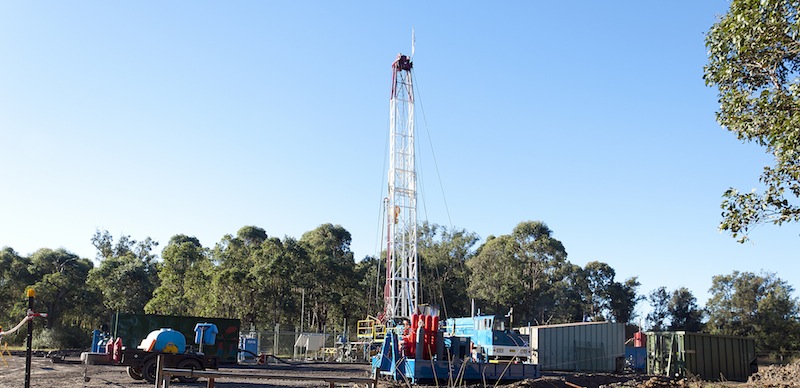Hydraulic fracturing, or fracking, has become a common – and controversial – method for extracting natural gas and oil trapped underground from a type of rock called shale. The process involves pumping not just water and sand but chemicals that are potentially toxic into wells to get out the gas or oil. Industry argues that the chemicals are a small part of the fracking fluid – ranging from half a percent to two percent. But when it takes “several million gallons of water” to frack one well, this means over 10,000 gallons of chemicals.
With the potential for these chemicals to contaminate water or air, it’s important to know exactly what chemicals are being used and what their health impacts are. EPA needs to hear from you that the disclosure of this information is critical for protecting public health. Read on to find out about the issue and how you can help.
Contamination risk
There are concerns that these chemicals could pollute the water or air. Recently, at the end of June, “more than 25,000 gallons of chemicals, diesel fuel, and other compounds were released” at a fracking site in Ohio because of an equipment malfunction. The substances flowed into a tributary of the Ohio River, which is a major source of drinking water, and killed over 70,000 fish.
What we know: Identified chemicals pose clear health hazards
Some fracking chemicals are known and hazardous. A subset of these are actually also found in consumer products, and we’ve discussed them on our website as part of the Hazardous 100+ list. For example, Bronopol, a preservative in personal care products that can release cancer-causing formaldehyde, was recently used as a biocide in fracking fluids in North Dakota.

What we don’t know: Veil of secrecy behind “trade secrets”
There are some chemical disclosure requirements, albeit minimal, largely at the state level. While over 20 states require companies to provide at least some information related to the chemicals used in fracking operations, the level of information required varies. Further, many states mandate or at least allow the information to be sent to a public chemical disclosure registry known as FracFocus. Back in 2011, oil and gas companies helped design this website to address the public’s concerns about the chemicals used in fracking, and possibly to avoid mandatory disclosure policies.
Currently, the information on the FracFocus website is moderately searchable but the companies’ entries have some errors. Companies are also able to avoid actually disclosing chemicals to the public by claiming they are trade secrets. If the trade secret claims are even examined by the state governments that require disclosure, the claims may not be reviewed against a stringent standard. A recent report issued by a task force advising the Secretary of the Department of Energy highlighted some of these issues and implied the site lacked sufficient transparency and accuracy. The task force did make recommendations for improvements, but it is uncertain whether all of them will be heeded.
The large oil and gas service company Baker Hughes made headlines a few months ago by revealing that it can now disclose 100% of the chemicals used in its fracking fluids on FracFocus, without masking chemical identities by claiming they are trade secrets. But, there’s a catch: Baker Hughes actually stated that it would only do this where its customers and relevant government entities agree to the disclosure.
These developments may seem promising, but who knows if they’ll actually happen. Maybe Baker Hughes will come through. Maybe all of the disclosures on FracFocus will become more transparent and accurate. But no one is requiring that these changes be made, so there is no certainty.
TSCA to the rescue?
While the Toxic Substances Control Act (TSCA) is an inadequate law that needs to be reformed, it can still serve some good purposes like with reporting rules. For instance, EPA has the authority under TSCA to require toxicity testing and the submission of chemical identity information, data on health and environmental effects, and health and safety studies. Additionally, in recent years, EPA has been stricter about allowing companies to claim that chemical identity information in health and safety studies is a trade secret, to further the goal of making “more health and safety information available to the public.” In 2011, Earthjustice and other groups, including those that are part of Safer Chemicals, Healthy Families, filed a petition asking EPA to use all of this authority as it related to chemicals and mixtures used in oil and gas exploration or production.
EPA’s first step
In response to the petition, EPA announced it would begin a stakeholder process to obtain feedback on questions related to gathering and disclosing available information on fracking chemicals and mixtures. EPA is asking for input on whether the mechanism should be mandatory or voluntary, what information should be reported and/or publicly disclosed and by which entities, and how to avoid overlapping with related efforts.
EPA needs to hear from you!
Click here to tell EPA that you want strong requirements for the reporting of fracking fluid contents and that you want health and safety information to be disclosed to the public. It’s time for companies to stop hiding behind unnecessary trade secret claims and be transparent about the risks associated with the chemicals.
Here is a sample message to send to the EPA. You can copy, paste, and edit as you see fit!
I am deeply concerned about the lack of transparency around the health and environmental impacts of chemicals used in hydraulic fracturing. The public has the right to know about the chemicals that are ending up in wildlife, our drinking water, lakes, and rivers. Existing disclosure practices are not enough. Please use the full extent of your authority to require companies, especially manufacturers and processors, to report at least the identities and health effects of hydraulic fracturing chemicals and mixtures. Please then see that all relevant health and safety information is publicly disclosed so we know the risks we’re facing.



